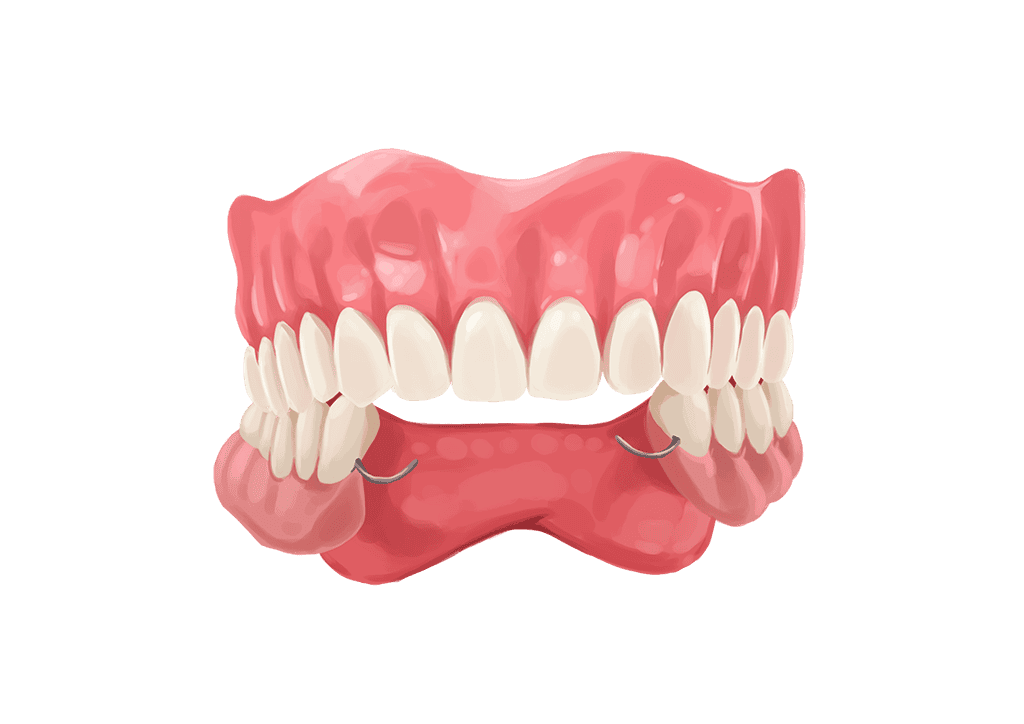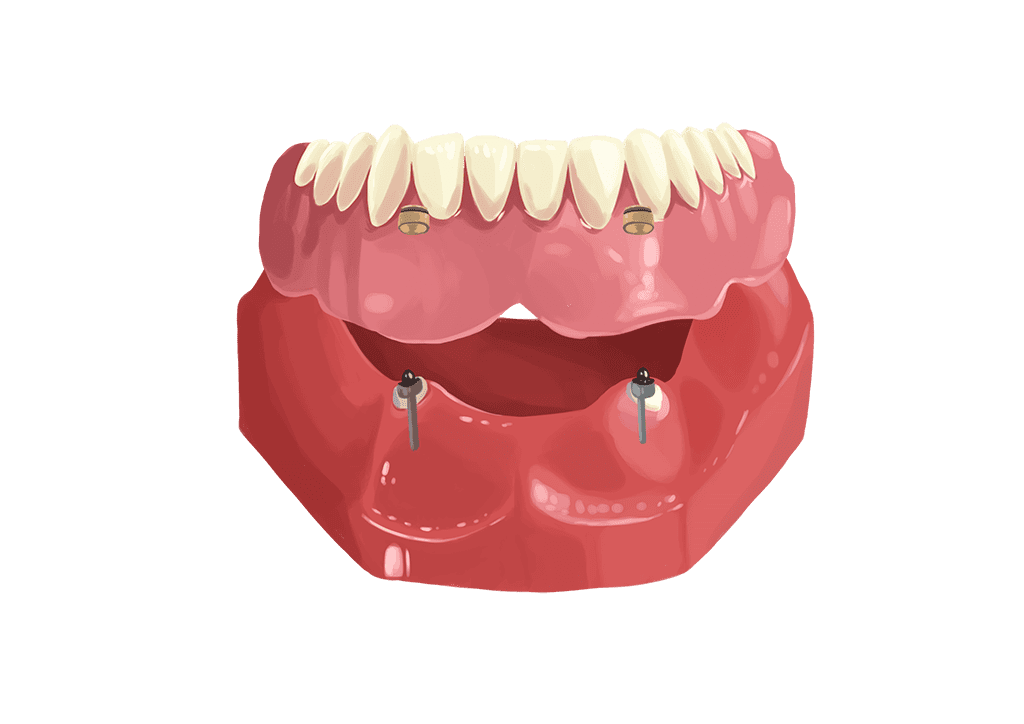What are dentures?
Dentures, sometimes called false teeth, are a kind of removable dental restoration that replaces missing teeth. That usually means multiple teeth and sometimes all teeth. There are many ways to replace missing teeth. The best treatment choice is directly dependant on the individual patient and their unique situation.
What are dentures made of?
Creating a removable denture or partial denture requires taking impressions of your mouth. A special dental gel is placed in a delivery tray and pressed over the teeth or gums. It then sets into a flexible and precise mold of your mouth.
From these impressions, stone models are created. These are near perfect recreations of your upper and lower dental arches. Replacement teeth can then be made by a dental laboratory.
Upper full dentures, replacing all the top teeth, cover the entire roof of the mouth. Lower full dentures, replacing all the bottom teeth, are instead usually horseshoe-shaped.
What about partials?
When a patient is only missing some of the teeth in an arch, they may choose a partial denture. These are normally made from a metal alloy framework with clasps that grip onto the remaining healthy teeth. The pink acrylic base and teeth are added in areas where teeth are missing to fill in the gaps.
Types of dentures
There are several types of dentures available, and choosing which best fits your needs is dependant on your unique situation. Are you already missing all your teeth? Do you need some taken out? Do you have some strong, healthy teeth remaining?
The cost of dentures also varies by type. All of this needs to be taken into consideration when choosing a treatment plan for replacing teeth.

Conventional & partial dentures
Conventional dentures and partial dentures are often chosen when a patient is already missing teeth. A complete denture replaces all teeth, while a partial denture replaces just a few.
After a tooth is lost, the bone of the jaw reshapes itself over a period of three to six months. A denture will only fit well if the bone has stabilized after it’s healing time.
If removing teeth is necessary, this means wearing an inexpensive temporary denture or partial (often called a “flipper”). You may even choose to go without teeth for a period of time before permanent dentures can be made.

Immediate dentures
With immediate dentures, the restorations are fabricated before the teeth are removed. After tooth extractions are performed, the denture is immediately placed in the mouth.
As healing occurs over the next few months, the bone of the jaw will change, causing the denture to no longer fit properly. When this happens the denture can be relined.
A reline means acrylic can be added to the underside of the denture to fill in the space created by bone reshaping. Several relines may be necessary to continue having a proper fitting denture.

Overdentures
An overdenture is a complete denture that rests on a few healthy teeth, prepared teeth roots, or dental implants. The advantage of an overdenture is that they may be designed to “snap” into place, giving the denture more stability.
Keeping teeth or tooth roots in place also helps to stimulate the bone of the jaws. This prevents the reshaping of bone that normally occurs when no teeth are present.
Without this stimulation, it is common for the bone of the jaw to gradually disappear and flatten over time, leading to dentures that fit poorly.
How do dentures work?
Upper dentures
Upper complete dentures cover the entire roof of the mouth all the way back to the spongy area in the back of the mouth called the soft palate. They are designed with a ridge that presses into this soft tissue and creates a suction that holds the denture in place.
Lower dentures
Lower complete dentures rest directly on the horseshoe-shaped lower jaw. They are designed with extended edges that go deeply into the floor of the mouth under the tongue. This allows the muscles of the tongue to help hold them in place.
Lower dentures do not suction into place like upper dentures but instead rely upon these muscles and gravity to stay in position.
Partial dentures
Partial dentures are designed with metal clasps that latch onto remaining healthy teeth. This creates much more stability and increased chewing ability.
The strength of the metal framework also allows the restorations to be made much more thinly than acrylic dentures. This means they can be designed to be less bulky in the mouth.
Pros & cons of dentures
Pros
- Affordable option for replacing all teeth
- Dentures can be fairly stable if they fit well
- Greater chewing ability than missing teeth
- Creates a better looking smile
- Can last 5-7 years
- Partials clasped to remaining teeth are very stable
Cons
- May come loose when eating or talking
- May feel bulky or create sore spots
- Less chewing ability than natural teeth
- Do not prevent jaw bone loss
- May crack or break
- Must be removed overnight, every night
- Dentures only last 5-7 years, however, and do not work as well as natural teeth.
- There are special care instructions for dentures, including taking them out overnight.
- Dentures are a generally affordable option for replacing all your teeth.
- Other options for replacing teeth (dental implants, brdiges, veneers) may be more expensive at first, but function better and last a lifetime.
Are there any alternatives to dentures?
If the problems of conventional dentures concern you, consider an implant-supported restoration like the G4 Procedure. We have our offices located in Dallas, Tysons.
This revolutionary technique replaces missing teeth with a beautiful and functional fixed bridge in just 24 hours. Nothing comes as close to having your natural teeth; restoring your function and creating the smile you deserve to have.
